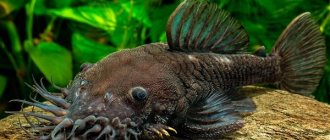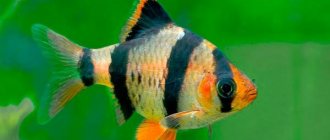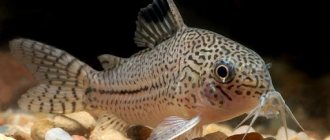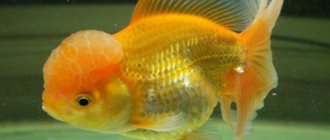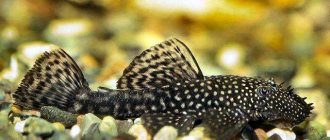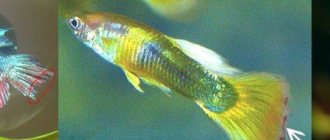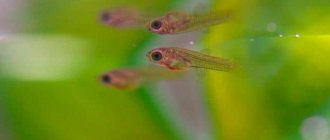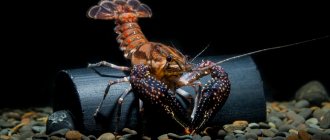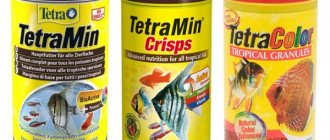Aquarium catfish maintenance care compatibility feeding description photo video.
Care and maintenance
Keeping and caring for catfish is not a complicated process. are kept in normal aquarium conditions at a temperature of 22-28 ° C. Water hardness 6-12 . Acidity is neutral. If your acidity deviates a little in one direction or another, there is nothing to worry about. But it is very important that the water is not salty. Most species are not fussy about the oxygen regime, since catfish have skin respiration or the ability to breathe atmospheric air.
The breathing process consists of the catfish rising to the surface, taking in air and sinking to the bottom until the air is completely used up. The soil doesn't really matter. To make your catfish comfortable, you need to set up an aquarium for him. Since the catfish is a bottom inhabitant of the aquarium, it is necessary to make some kind of shelter for it.
It can be made from stone, different types of driftwood, it can be artificial houses, castles and plants. As for living plants, you need to look at the specific variety of catfish, since many of them are herbivores and the plant may not live with you for long. But still, if you want to plant plants in an aquarium, and your catfish is a herbivore, then you need to choose large plants with a well-developed root system. It is very important to create a territory for the catfish and place driftwood. Without such shelter, the catfish will not be comfortable and its life will be significantly shortened, and thanks to the snag, the catfish will receive important cellulose for life.
Preparing to buy an aquarium catfish
When deciding to purchase a pet, you should make the necessary preparations. By qualitatively researching the features of your pet’s lifestyle and hobbies, you can guarantee the acquisition of the necessary things.
Additionally, catfish are called “household orderlies” for their love of eating soil. The fish destroy scales and food waste from the bottom of the aquarium, thus maintaining the cleanliness of the reservoir.
High-quality cleaning of the aquarium is carried out by pet catfish, which is why the owner of the reservoir can forget about cleaning the aquarium. However, it doesn’t hurt to purchase a high-quality filter, since the fish get their food in an original way. They lift the settled remains from the surface of the bottom, moving their bodies; after the food begins to float, the catfish eat it.
When organizing repopulation in an aquarium, it is important to pay attention to the already established inhabitants of the reservoir. Not all fish get along with their new neighbors and can eat them. Guppies and neons are a favorite delicacy for catfish, so to avoid lethal consequences, the fish should be separated.
To create optimal conditions for catfish, it is necessary to fill the aquarium with stones or dense vegetation. These fish prefer to stay in shelter until it gets dark. During the daytime, they like to clean the bottom of the aquarium. However, catfish are not easy to see, as they have a special protective coloring and practically blend in with the stones.
KALLICHTHYS OR AQUARIUM CATFISH KALICHTHIS CONTENTS BREEDING PHOTO.
DIANEMA LONGIBARBIS CONTENTS BREEDING COMPATIBILITY PHOTO DESCRIPTION.
BROCHIS OR GREEN CATFISH CONTENTS REPRODUCTION DESCRIPTION PHOTO.
AMBLIDORAS HANCOCK OR MUMBLING CATFISH AQUARIUM FISH.
Do catfish clean the aquarium?
Surely, sellers in pet stores and friends who own aquarium catfish often told you that these fish clean the aquarium, so you don’t have to do anything additional. This is not entirely true. Catfish actually clean the aquarium, picking up leftover food, food waste or some kind of scales from the bottom. But, if the area of the aquarium is large enough, and there are very few fish, catfish simply will not cope with their task.
This way the fish will be cleaned up as best they can, but you will still have to do the basic cleaning to keep them from dying. It is necessary to purchase a water purification filter to help aquarium residents.
Aquarium catfish
Aquarists love catfish for their unusual appearance, the ability of some species to grow to impressive sizes, as well as their decorative properties. There are incredibly many species of aquarium catfish, some of them even vaguely resemble catfish. There are species that completely change our understanding of catfish, and some that can truly rival any goldfish in the aquarium.
Types of aquarium catfish
- The speckled aquarium catfish is a representative of the armored catfish. Almost all of this family of fish have a calm disposition. The marbled aquarium catfish is compatible with any other species; it prefers to live in schools and in aquariums with sandy soil.
- The red-tailed aquarium catfish is also an ornamental species. This particular species is growing by leaps and bounds. And at the same time, the fish grow to very impressive sizes. Therefore, it is worth keeping them as young individuals. Most often you can find this inhabitant at the bottom of the aquarium, where he prefers to rest.
- The aquarium sucker catfish got its name due to the unusual structure of its mouth. Their correct name is ancitrus. These fish are also the orderlies of your aquarium and are completely unpretentious. This one also loves life at the bottom of the aquarium, is peaceful and will not get along except with cichlids. The cichlids will begin to gnaw the fins of the catfish and thereby harm them.
- The aquarium catfish is a representative of the inhabitants of South Asia; in an aquarium it will grow no longer than 12 cm. Such a fish needs space, therefore an aquarium of at least 100 liters is suitable for it. The aquarium catfish of this species prefers life in the water column, but activity occurs in the dark. It is important for this fish to have a sufficient amount of all kinds of decorations and snags on the bottom.
- The tiger aquarium catfish is also called the tiger pseudoplatistoma. When getting these fish, be prepared for their timid nature, which sweeps away everything in its path. The fish will grow large, so it immediately needs a large aquarium, so for an adult pair you need about 1000 liters. According to the size, it is advisable to cover the bottom with large stones or pebbles. If possible, do not introduce timid creatures of similar disposition to this species, as this will only increase the fear.
- The aquarium catfish, by its name alone, arouses the interest of any aquarist. They got their name from their cute and mustachioed face. This species is unpretentious in food, but the quality of water plays an important role. Therefore, constant filtration, aeration and water replacement are mandatory conditions.
- Aquarium striped catfish or the so-called singing catfish. Along the entire body of the fish there are wide bright stripes of white and black colors. This representative of the armored carp boasts incredibly strong armor in the form of bone growths on the body. In addition to their strength, these growths have small spikes, which gives the fish excellent protection.
- The spotted aquarium catfish or cuckoo catfish is a representative of the inhabitants of Africa. The species got its name for a reason: after spawning, the fish act exactly like the well-known bird. The fish are incredibly active and can chase each other in the water for hours.
- The shark aquarium catfish quite rightly got its name, since it looks like a killer whale, but only in miniature. Pangasius, the second name for the aquarium shark catfish, has a flat head shape, as well as two pairs of whiskers and fins, very reminiscent of a shark. The fish is quite nimble, but also very shy. To keep an aquarium catfish you will need an aquarium of at least 300 liters. It is very good if the bottom is decorated with a lot of all kinds of snags and shelters for fish.
Compatibility of catfish
Basically, catfish are peaceful, do not get into fights with other aquarium fish, and sometimes there are conflicts among themselves.
It happens that even a stronger catfish begins to chase the weaker one, and, alas, kills him.
But this is extremely rare. The compatibility of catfish with other fish depends on the type of catfish.
Peace-loving, herbivorous animals need to be matched with non-aggressive neighbors. And for predators - larger fish that can fend for themselves.
Reproduction and breeding
The breeding process for catfish is quite simple, and if you only have fish of this species in your aquarium, you don’t even have to put them in a separate aquarium. Otherwise, for catfish spawning, it is better to allocate a container with clean water with a capacity of 30 to 50 liters. Usually there are 3-4 males per female. It is very desirable that in the place where the spawning takes place there is a lot of algae and soft soil.
If you want to encourage your pets to reproduce, you need to change the water temperature within a few days within 17-25 ° C and aerate the aquarium. Spawning usually occurs early in the morning. When the eggs have already been laid, you can leave natural light or darken it a little. A week after spawning, the female will be ready for a new spawning. The fry develop quite quickly and almost immediately they can be fed with finely chopped bloodworms or “dust”.
Feeding
Feeding catfish is very easy. They eat up the fish food that lies on the bottom, thereby cleaning the bottom of the aquarium. They eat almost everything: pieces of fish, shrimp, tablets, frozen food, cereal, and since most catfish are predators, they can eat small fish in an aquarium, perceiving them as food.
Drawing a conclusion, we can say that catfish in an aquarium are the right fish. Unpretentious and does not require additional care, resistant to various diseases, and, well, very original and beautiful. Having a catfish, your aquarium will always look unique, and you will always be able to rejoice and enjoy the beauty of your pet.
In the following articles you will be able to find the most necessary information about the maintenance of aquarium catfish, the species that interest you, the variety of aquarium catfish, feeding, care, as well as tables of compatibility of catfish with other inhabitants of the aquarium.
"Orphans" of the aquarium
You can often hear from pet store sellers that small and large catfish clean the water in the aquarium and the owner does not have to do this. Catfish, combing the soil at the bottom, actually pick up everything edible, partially cleaning the pollution. By the way, this does not mean that your pet’s nutrition should be left to chance.
It is also important to note that the natural habitat of these fish is silted water. But this also does not mean that you can not clean the aquarium at all and only change the water occasionally. Increased aeration of the water is really not necessary, and clean water and an aquarium are the key to the health of your fish. If you also have other fish, they simply need cleanliness, and the catfish will quickly get used to it and will not experience any inconvenience.
General information about catfish
All types of aquarium catfish, of which there are a huge number in nature, are surprisingly similar in appearance. More than 1,200 thousand different waterfowl variations of this species live in aquariums alone. Otherwise, these fish are called cleaners, because they eat the remains of half-eaten, rotting food lying on the bottom.
And many amateurs purchase such “orderlies” precisely because of their accuracy. You can buy such interesting specimens at any pet store. These aquarium fish, instead of scales, have a lamellar covering consisting of bone tissue. This feature distinguishes them from other waterfowl. Catfish mainly live at the bottom of glass reservoirs and are active only at night. They feed on plant foods, but sometimes they do not hesitate to feast on the leftovers “from the master’s bottom table.”
Catfish are very popular among aquarists, so the demand for them is very high. They buy carapaces because they are: quite peaceful; feel excellent in water at temperatures from 18° +25°C; adapted to hard water; They feel confident with its average acidity with plus/minus deviations in different directions.
Nature has endowed catfish with intestinal respiration. Looking out of the aquarium, they swallow air with their mouths, which is then processed into pure oxygen. If a catfish often lingers near the surface of the water, it means that it is difficult for him to breathe. Aquarium orderlies
CATFISH MOCKED CORRIDORAS CONTENTS BREEDING SPAWNING DESCRIPTION VIDEO PHOTO
PLATIDORAS CONTENTS DESCRIPTION REPRODUCTION PHOTO COMPATIBILITY
PTERYGOPLYCHTHUS BROCADE CONTENTS REPRODUCTION DESCRIPTION PHOTO COMPATIBILITY
GLASS CATFISH CONTENTS DESCRIPTION REPRODUCTION PHOTO COMPATIBILITY.
WHITE-SPOTTED AGAMIXIS CONTENTS REPRODUCTION COMPATIBILITY PHOTO.
Sacbranchial catfish: CONTENTS, COMPATIBILITY, PHOTO, DESCRIPTION.
LORICARY: CONTENTS, COMPATIBILITY, BREEDING, PHOTO, DESCRIPTION.
Description
Catfish are considered aquarium orderlies. They love the dark, so they swim along the bottom, where they collect food debris and plaque from stones, shells and algae. You can try keeping catfish of different sizes in one aquarium. Giant catfish, which are well suited for breeding in an aquarium, reach up to 35 cm in length. This length is typical for an adult brocade pterygoplicht. Most species of these fish are unpretentious when it comes to food. But do not forget that there are also predatory catfish that eat small fish.
Aquarium catfish - maintenance and care
Keeping and caring for catfish
First of all, you need to understand that catfish in an aquarium are not scavengers and scavengers at all, although they successfully perform the work of orderlies. They, as well as other inhabitants of the aquarium, require proper care.
And before you buy and introduce a representative of the catfish family into the aquarium, you need to take into account such parameters as soil at the bottom, the presence of shelters, vegetation, and compatibility with other fish.
Aquarium soil is required for keeping catfish. In the process of searching for leftover food, the catfish will make some noise by moving pebbles on the bottom of the aquarium. It is not advisable to lay coarse gravel so that the catfish do not damage the abdomen and antennae.
The water temperature in the aquarium should be at 18...26°C, with neutral acidity and hardness of 6-8º. As for plants, artificial ones are mainly used to keep catfish. Echindorus or cryptocarina are suitable as living vegetation.
Catfish prefer a solitary lifestyle and low lighting. For a comfortable stay, they simply need shelter - grape roots, stones, shells, where they can hide during the day.
When talking about keeping and caring for aquarium catfish, it is impossible not to mention their ability to get along with various fish. For the most part, catfish are peaceful and have little conflict with their neighbors. However, sometimes they find out their relationship with each other, even to the point of killing a weaker relative.
A significant place in the maintenance and care of catfish fish is occupied by their proper feeding. They are omnivores, so their main diet may consist of bloodworms, tubifex, koretra, black bread, daphnia, lean meat, and dry food. To ensure adequate nutrition, sometimes they need to be fed with spirulina tablets.
Improper maintenance and care of aquarium catfish can lead to their illness. Excess salts and nitrates in water lead to poor health. They become lethargic, hardly move, refuse food, and their antennae fall off. In this case, they must be immediately removed from the aquarium and enhanced care must be provided - frequent changes of water, increased aeration, and prevention of food rotting.
Compatibility
Most representatives of catfish, due to their friendly and peaceful nature, get along well with their relatives and other aquarium fish. Modest and quiet, catfish do not enter into conflicts or start fights, but with the wrong neighbors they can become victims. Introducing predatory fish, for example, astronotus, into the same aquarium together with catfish can lead to the death of the latter. It is also not recommended to place small and weak fish - guppies, neons and others - in a tank with predatory catfish, since pets may consider them food.
Interesting fact: the European catfish can weigh up to 400 kg, and is even capable of attacking people.
Aquarium catfish fish: ancitrus, brochis, broniacs
Aquarium cleaners: sucker catfish
Description of side-scaled catfish
Maintenance of armored catfish
Bronyaks are nocturnal and, accordingly, do not like bright light. They try to spend all daytime in shelters. To do this, the aquarium must be equipped with a grotto, driftwood or piles of large stones with abundant vegetation. It is necessary to pay attention to the fact that catfish grow, and there should be no impenetrable tubes or hollow stumps as shelters.
The soil should be selected from rounded stones of various fractions, preferably dark in color, and coarse river sand can also be used.
Due to the fact that catfish excrete a large amount of waste products, it is necessary to ensure good filtration of water and replace up to 25% of the water weekly (with tap water separated from chlorine or specially filtered).
When it comes to feeding, they are omnivorous and willingly eat live, frozen and dry food (worms, bloodworms, tubifex, granulated and tablet food with various additives), and also successfully hunt snails. To avoid various incidents with other inhabitants of the aquarium, you need to remember that catfish eat those fish that they can swallow with their mouthparts.
Popular types of armor
Sexual differences and reproduction of Platydoras
Features of Platidoras
Sexual differences and reproduction of agamixes
Catering for Ancitrus
Sexual differences and reproduction of ancitruses
Brochis catfish
Description of catfish
Conditions of detention
Sexual differences and reproduction
Features of the view
Armored aquarium catfish
Armored (dorado), armored or side-scaled catfishes are a separate family of catfish, distinguished by the presence of large bony plates that cover the entire body of the catfish, except for the abdominal region. Along the entire body, on the sides, there is a line of bone spines. Some fins also have hard bony rays. This family is also interesting for its ability to produce various sounds, due to which some species are called singing.
Nutrition
Feeding catfish is even simpler than keeping them. If your pets live in a tank with other fish, then you don’t have to feed the catfish at all - they will happily pick up leftover food from their neighbors, at the same time cleaning the area. When keeping only catfish fish, you can offer your wards the following products:
- Live and frozen food: bloodworms, tubifex, cyclops, shrimp, etc.
- Catfish tablets and flakes.
- Plant foods: cucumber, spinach, green peas, broccoli, etc.
Before serving, live food must be thoroughly washed, and plant food must be scalded with boiling water. If a predatory catfish lives in the tank, you should remember that small neighbors can become its lunch.
Interesting fact: hungry and predatory catfish living in their natural environment can drag even a dog to the bottom.
Catfish tarakatum: how to keep it in an aquarium
Ornamental catfish have always fascinated aquarists - from the very times when people began to keep and breed fish in their artificial reservoirs. Of course, it is quite difficult to call these animals beautiful; for example, cute and colorful goldfish look cuter at first glance. But if a kind of beauty contest were held among the varieties of aquarium catfish, then a species called “tarakatum” would most likely take one of the prizes in it.
Scientific classification and habitat in nature: interesting facts
Appearance and habits
Sexual characteristics
Conditions for proper maintenance
Tarakatum catfish are very popular among aquarists all over the world, and this is primarily due to their unpretentiousness to environmental conditions.
Aqua parameters . Thus, the permissible temperature range of the aquatic environment is from +18 to +28 degrees, which corresponds to home temperature, as well as the climatic conditions for most aquarium fish and plants.
Water hardness can be up to 20°C, and the acid-base balance is at a neutral level (6.0–8.0 units).
Aquarium size . It is recommended to keep catfish in a group of 2 to 5 individuals. Mandatory condition: in a given group there can be only one male. Based on this, as well as the size of each individual, the aquarium should be spacious, with a volume of at least 120 liters.
Scenery . Inside the aquarium you should place decorative elements such as grottoes, caves, and stone slides. Bushes of aquatic plants will provide catfish with good shelter during daytime sleep.
Filtration and aeration . As already mentioned, cockroaches are capable of jumping out of the water, so a home artificial pond should be covered with a lid. Therefore, intensive aeration of the aquatic environment is necessary. Powerful filtration should be used, as catfish leave quite a lot of waste. Only during the spawning period the filter cannot be turned on at full power, so as not to create a strong water current.
Light . Light intensity is not that important for hoplo; A medium-power fluorescent lamp is sufficient.
Feeding. There are no problems with nutrition. All specialized commercial feeds for ornamental catfish are suitable. However, you should not get too carried away with them; you should also give live food (coretra, earthworms, daphnia) and frozen organic food (bloodworms, for example).
Compatibility. The Tarakatum catfish is a completely peaceful fish (except for the period of spawning and protection of eggs). It gets along well with popular aquarium inhabitants such as barbs or tetras. Of course, you should not keep ornamental catfish together with large American cichlids.
In all other cases, the hoplo is practically not interested in its neighbors, leading a quiet bottom-dwelling lifestyle. By the way, these fish can dig soil (medium or coarse sand), but, as a rule, they do not cause damage to vegetation.
Thus, the conditions for keeping this species of catfish can be called easy; Only the breeding season requires some effort and attention on the part of the aquarist.
Interesting breeding features
Aquarium fish catfish ancistrus - care and maintenance
An aquarium in the house brings joy and pleasure. Many people enjoy watching colorful schools of fish in an aquarium. There are different types of fish that can live at home. One of the common species is Ancistrus vulgaris.
Description of Ancistrus
Maintenance and care
Caring for this aquarium fish is not very difficult because this catfish can live in different conditions. But the water in the aquarium must be fresh; the volume of the aquarium should preferably be at least fifty liters. It must contain stones, caves and driftwood in which the catfish will hide.
The comfortable existence of this fish largely depends on the surrounding temperature. Temperatures in the range from 15 to 30 degrees Celsius are acceptable, but the optimal option is 22-25 degrees. Ancistrus vulgaris withstands temperature changes well. But it is advisable not to let things get too cold or overheating. In this case, the water should not become very cloudy. Therefore, it must be changed regularly. But you need to change the water gradually so that your catfish does not feel the sharp contrast. There is no need to boil the water for the aquarium; just let the tap water sit for three days.
To prevent the fish from suffocating, you need to periodically aerate the aquarium using a special device. They usually do not like bright light and hide in algae. Therefore, it is difficult to take a photo of Ancistrus. These fish are peaceful and get along well in an aquarium with other fish, such as guppies and angelfish.
Feeding
This catfish usually feeds on plaque that forms on the glass of the aquarium and on its bottom. But you need to feed additionally. Most often, dry food is used, which is sold in special stores and markets.
You can also give worms (bloodworms), but you need to make sure that the fish do not choke on the food. Before throwing bloodworms into the aquarium, you need to wash it. In addition, it should only be given fresh, since stale products will harm the fish.
By eating plaque on the walls of the aquarium, they clean it well. If there is not enough greenery in the diet, then the catfish can gnaw holes in the algae sheets, and thereby spoil the plants. To avoid this situation, catfish should regularly receive pieces of cabbage leaves or nettles as food. It is advisable to boil these leaves in boiling water before giving them to the fish, then divide them into small pieces, tie them to a small weight, and lower them to the bottom. But now stores sell a lot of different branded foods that contain all the necessary substances, and in such a situation the catfish in your aquarium will always be fed.
Breeding
Beneficial features
Feeding
Feeding catfish is not hard work for owners. If there are other fish in the same container with the catfish, then there is no need to feed them separately. They eat leftover food that settles on the bottom or walls, thus cleaning it out. You can use small pieces of fish or shrimp as food, which can be easily found in any pet store.
In nature, representatives of large species can live up to 100 years. However, representatives of home aquariums do not live that long. Under good conditions and nutrition, aquarium catfish live up to 8 years.
Aquarium shark, or shark catfish
A shark swimming in a home aquarium attracts the attention of guests, often becoming the object of observation. Its original behavior allows many aquarists to thoroughly enjoy their aquaworld. The Pangasius shark catfish will become one of the worthy inhabitants of the aquarium and a favorite of all family members and guests.
Description of the species
Keeping shark catfish
A large view of a pleasant monochromatic color scheme. The length of an adult in nature reaches 1.4 m, in large aquariums - 60 cm. The aquarium must be equipped with a lid, because when frightened, the catfish panics and can jump out.
For arrangement, it is recommended to use large decorations: stones, driftwood, shelters (without sharp, cutting edges). To avoid causing damage to the abdominal area of the catfish, sand or small rounded gravel is used as soil.
Plants must have a good root system and be firmly held by the soil; planting in pots is allowed. The minimum size of an aquarium is 60 liters, but to ensure a comfortable existence you need to use volumes from 350 liters.
The keeping temperature for pangasius is in the range from 24 to 29°C, while the hardness should be from 2 to 15°, and the pH from 6.5 to 8.0. Since this species is very sensitive to water purity, it is necessary to change up to 30% of the aquarium volume weekly. Water parameters do not particularly affect the well-being of fish.
The pennant shark feels great in the current created by a good pump. It does not tolerate dirty and old water well, so the aquarium must be provided with a good filtration system and aeration. Juveniles of the common pangasius have a light silver color, which acquires a dark, rich color with age. Albinos are often found. Some species are gregarious, so they are difficult to keep due to the required aquarium volume (from 1200 l).
Feeding
Features of behavior of pangasius
Shark catfish: compatibility
It is better to keep pangasius in a species aquarium, and the neighbors should be large enough so that it does not eat them. Like most catfish, they only eat fish that they can swallow. They can be safely combined with bream-like barbs, polypterus, gouramis, etc.
Breeding
Sexual characteristics of the ornamental shark appear in adult specimens, and sexual maturity occurs at the age of 4 years. Females are slightly lighter, larger and more powerful than males. Due to the large size of the species, its breeding in aquariums is difficult.
Spawning of Pangasius shark catfish in natural conditions occurs from June to November. The shark catfish rises up the river, spawns among plants and lays up to 100,000 eggs, after the larvae emerge from the eggs (after 2-4 days) they go to their permanent habitat. For aquarists, this species of fish is imported, and cases of spawning in an aquarium are few and are not described in the literature.
A little video that will help you imagine what freshwater sharks will look like in your aquarium:
Reproduction
It is possible to stimulate the reproduction of many species of aquarium catfish if you lower the temperature of the aquarium. Spawning occurs within 5 days. The female with one or more males is transplanted into the spawning area. You can breed catfish in an ordinary plastic basin. It is better to add driftwood or some plants there for greater comfort of the fish.
The most important thing is to correctly distinguish the sex of the catfish. The male is always slimmer and brighter. The courtship period lasts about a week. The male shows his best qualities. He quickly circles around the female, trying to interest her. When the female is ready to mate, the male immediately touches her with his long mustache, which indicates his readiness to reproduce.
Aquarium catfish are very interesting fish. He is pleasant and interesting to watch. They are easy to care for and do not require any special skills from aquarists. Therefore, catfish are quite popular in the modern world, especially for those who want to diversify and increase the number of inhabitants of their home aquarium.
To clean the aquarium, you should get a plecostomus
Damaging abilities of plecostomus
Why you should have a plecostomus in your aquarium
Plecostomus is known for its ability to keep the aquarium clean, as it fights fouling on the inner walls. With the help of a suction cup mouth, in just a few days, a catfish can clean a two-hundred-liter aquarium, completely covered with greenery!
Among other catfish, this one is the most unpretentious, which is why it is even more popular. Plecostomus feels comfortable in a wide range of different indicators.
Ideal for those who, like Plecostomus, prefer to be active at night. You won’t even recognize him in the evening as the modest fellow who hid in a shelter all day.
Attractive color is another plus in its favor
The appearance of the catfish is also remarkable. The beige body is covered with dark spots, the number of which largely depends on the species, because under the general name “plecostomus” more than a dozen different species are sold, distinguishing which only by external signs is not an easy task.
Plecostomus is characterized by a high dorsal fin, which is often compared to a sail, high-mounted eyes, a suction cup mouth, on both sides of which there are organs of touch in the form of thin antennae. The antennae also carry taste buds. It is noteworthy that such receptors are present on almost the entire surface of the body, thanks to which the catfish can find food even in pitch darkness.
Depending on conditions, this fish can reach a length of 20-25 cm, in the wild up to 40 cm.
How to properly maintain
Plecostomus needs large sizes; the volume of the aquarium should be at least 100 liters. It is important to provide them with shelters (various pots, driftwood) with a sufficient diameter of holes. Small pebbles or sand are used as a substrate. Floating plants will create darkness, which is so necessary due to the fact that this catfish is active at night, and therefore does not like bright light.
Aeration and filtration are important. Change 30-40% of the water at least once a week. Plecostomus is not picky about pH, but a neutral or slightly acidic environment is optimal. The water temperature should not be very low - 21 - 26 degrees.
In the right conditions, catfish will live in an aquarium for up to 15 years.
What to feed plecostomus
Character and livability
At a young age, the catfish is peaceful, gets along well with other inhabitants of the aquarium, and therefore can be kept in a community aquarium without any special worries. As he gets older, he becomes more aggressive and no longer tolerates encroachments on his territory. The breeder should worry in advance about such a possible need as a separate aquarium for the characteristic plecostomus.
With age, this catfish also ceases to fulfill its duties of cleaning the aquarium from algae growths.
If you are just trying yourself as an aquarist, then you should probably hold off on buying a plecostomus. Despite its unpretentiousness, this catfish requires the care of an experienced breeder.
